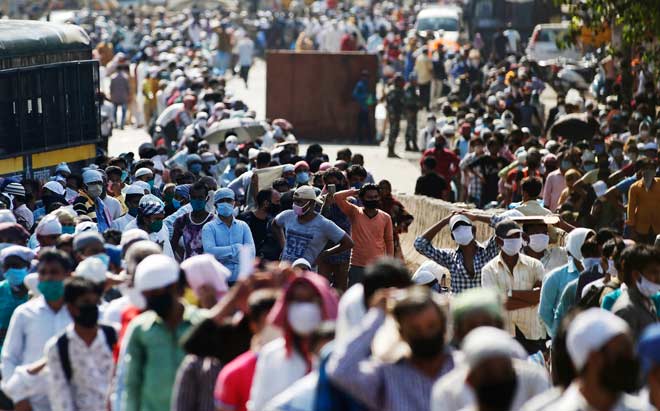
Telangana Today
Covid-19 deaths could top 18,000 in India, says public health expert
"Lowest mortality in the South Asia region has been reported from Sri Lanka (0.4 per million) while India, Singapore, Pakistan, Bangladesh, and Malaysia have similarly low rates per million population."
by PTIBengaluru: COVID-19 cases are expected to peak in early July in India, where deaths from the pandemic could top 18,000, an Epidemiologist and a public health expert said.
The country is still in the ascending limb of the epidemic, said Prof D Prabhakaran, Director, Centre for Control of Chronic Conditions (CCCC). Prabhakaran, also Professor at the Department of Epidemiology, London School of Hygiene and Tropical Medicine, the UK, said there can be no single number when asked about his assessment on eventual COVID-19 deaths in India. We should peak around early July.
This is based on a study of various published models and observing how the epidemic has risen and fallen in other countries, he told PTI on Wednesday.
Given that we are expecting around four to six lakh cases and with an average of three percent mortality, it (COVID-19 deaths in India) would be around 12,000-18,000, added the Adjunct Professor, Rollins School of Public Health, Emory University in the US.
On a low mortality rate in India and possible reasons for it, he said we will know if the mortality is actually low when the epidemic ends.
However with limited data it appears that mortality is low. To me I think it is the age structure as compared to Italy or the US which is much younger in India, the Vice President – Research & Policy, Public Health Foundation of India (PHFI), where he is also Professor, Epidemiology, said.
Age is an important risk factor and the older you are the chances of having these problems are higher. Other reasons including universal BCG vaccination, Malaria endemicity, exposure to repeated infections, unsanitary conditions increasing our immunity, hot weather have been implicated but we don’t have any clear proof of their role, he added.
Director of Indian Institute of Public Health-Hyderabad, Prof G V S Murthy said the lowest mortality in the South Asia region has been reported from Sri Lanka (0.4 per million) while India, Singapore, Pakistan, Bangladesh, and Malaysia have similarly low rates per million population.
It is difficult to say why the mortality is lower in these countries, Profesor Murthy said. All these countries initiated a community lockdown early in the course of the pandemic and therefore this may have reduced the contact with active cases of COVID-19 unlike in Europe and the US where such steps were delayed.
The evidence available globally and in India shows that the risk of mortality is highest among those aged 60 years or older, he said.
In India, 50 percent of all COVID-19 deaths have been among those older than 60 years. The proportion of population aged 60-plus in India is 9.9 per cent compared to 22.4 per cent in the US, 24.1 per cent in the UK, and 29.4 per cent in Italy.
Because of the early lockdown, exposure of this high-risk population in India along with those with co-morbidities like diabetes and hypertension was reduced significantly. This could be the main cause of low mortality, Professor Murthy told PTI.
He added that in a fortnight, dengue, malaria and diarrhoea will start creating havoc. Lessons learnt from COVID-19 on the importance of personal hygiene and self-care are the mantras for curtailing the adverse effects of infectious diseases.